Herbig-Haro 45 In The Running Man Nebula By NASA Hubble

Herbig-Haro 45 in the Running Man Nebula by NASA Hubble
More Posts from Starlost and Others
![Squidolus [Day:1325 Hour:12]](https://64.media.tumblr.com/3e7fb8bdf7a07b49b24822c993da4474/6a190546615c1cc5-e0/s500x750/e932b6ff6fd560665e9dac1381b0e60eec59d6e7.png)
Squidolus [Day:1325 Hour:12]
some of my favourite absolutely SICK facts about the trappist-1 exoplanets: - theyre all very close to one another and to their star, so the length of a year on them varies from 1 to 20 DAYS - since they’re so close, the star appears a lot bigger than our sun from earth, and from one planet you could easily see the rest, some would even appear bigger than the moon from earth. you could literally see the surface of another planet with a naked eye!!! - they’re tidally locked to their star like our moon is locked to earth, meaning only one side of a planet ever faces the star, and on the other side it’s always night. the sun never sets or rises on any of the planets - the star is red, so the sunlight is red/orange, meaning if, for example, plants were to grow there, they could be black and that’s just what we know now, imagine how much cool stuff we have yet to discover about the trappist-1 system

It is so cool to see such photos by beginners made with iPhone and eyepiece: “I know this may not be as good as many other photos but I tried my best with my beginners luck. Equipment : -Skywatcher 8 inch dob (manual) -iphone 7 (held manually) -10 mm eyepiece (super Plossl) Processing : Just photoshopped by -increasing contrast - fixing exposure - balancing whites and blacks Conditions: -very crappy skies (not good transparency) -light pollution: bortle 8-9 (inner city) - Jupiter not at opposition http://ift.tt/2FhOOrZ


if you don’t think pluto is a planet unfollow me right now










Planet Earth, April 16, 1972, as seen from the Apollo 16 spacecraft as it journeyed toward the Moon. (NASA)
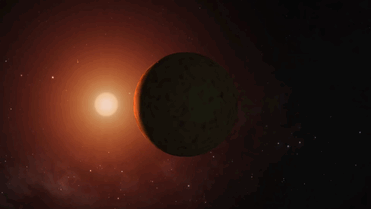
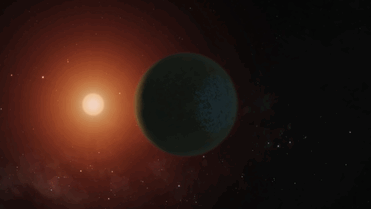
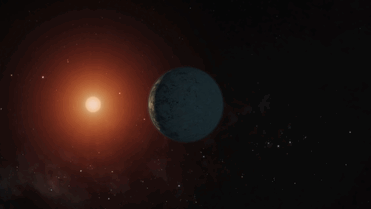
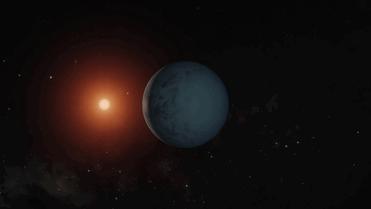


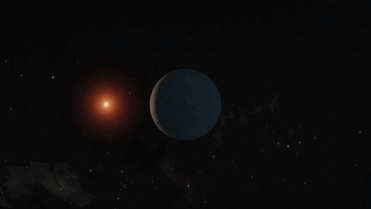
TRAPPIST-1 Planets - Flyaround Animation
Credit: NASA/Spitzer
Ten Interesting facts about Mercury
Mercury is the closest planet to the sun. As such, it circles the sun faster than all the other planets, which is why Romans named it after their swift-footed messenger god. He is the god of financial gain, commerce, eloquence, messages, communication (including divination), travelers, boundaries, luck, trickery and thieves; he also serves as the guide of souls to the underworld

Like Venus, Mercury orbits the Sun within Earth’s orbit as an inferior planet, and never exceeds 28° away from the Sun. When viewed from Earth, this proximity to the Sun means the planet can only be seen near the western or eastern horizon during the early evening or early morning. At this time it may appear as a bright star-like object, but is often far more difficult to observe than Venus. The planet telescopically displays the complete range of phases, similar to Venus and the Moon, as it moves in its inner orbit relative to Earth, which reoccurs over the so-called synodic period approximately every 116 days.

Mercury’s axis has the smallest tilt of any of the Solar System’s planets (about 1⁄30 degree). Its orbital eccentricity is the largest of all known planets in the Solar System; at perihelion, Mercury’s distance from the Sun is only about two-thirds (or 66%) of its distance at aphelion.

Its orbital period around the Sun of 87.97 days is the shortest of all the planets in the Solar System. A sidereal day (the period of rotation) lasts about 58.7 Earth days.

Mercury’s surface appears heavily cratered and is similar in appearance to the Moon’s, indicating that it has been geologically inactive for billions of years. Having almost no atmosphere to retain heat, it has surface temperatures that vary diurnally more than on any other planet in the Solar System, ranging from 100 K (−173 °C; −280 °F) at night to 700 K (427 °C; 800 °F) during the day across the equatorial regions. The polar regions are constantly below 180 K (−93 °C; −136 °F). The planet has no known natural satellites.

Unlike many other planets which “self-heal” through natural geological processes, the surface of Mercury is covered in craters. These are caused by numerous encounters with asteroids and comets. Most Mercurian craters are named after famous writers and artists. Any crater larger than 250 kilometres in diameter is referred to as a Basin.

The largest known crater is Caloris Basin, with a diameter of 1,550 km. The impact that created the Caloris Basin was so powerful that it caused lava eruptions and left a concentric ring over 2 km tall surrounding the impact crater.
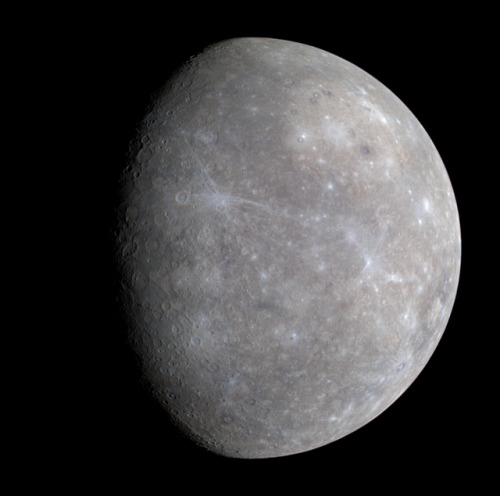
Two spacecraft have visited Mercury: Mariner 10 flew by in 1974 and 1975; and MESSENGER, launched in 2004, orbited Mercury over 4,000 times in four years before exhausting its fuel and crashing into the planet’s surface on April 30, 2015.

It is the smallest planet in the Solar System, with an equatorial radius of 2,439.7 kilometres (1,516.0 mi). Mercury is also smaller—albeit more massive—than the largestnatural satellites in the Solar System, Ganymede and Titan.

As if Mercury isn’t small enough, it not only shrank in its past but is continuing to shrink today. The tiny planet is made up of a single continental plate over a cooling iron core. As the core cools, it solidifies, reducing the planet’s volume and causing it to shrink. The process crumpled the surface, creating lobe-shaped scarps or cliffs, some hundreds of miles long and soaring up to a mile high, as well as Mercury’s “Great Valley,” which at about 620 miles long, 250 miles wide and 2 miles deep (1,000 by 400 by 3.2 km) is larger than Arizona’s famous Grand Canyon and deeper than the Great Rift Valley in East Africa.

The first telescopic observations of Mercury were made by Galileo in the early 17th century. Although he observed phases when he looked at Venus, his telescope was not powerful enough to see the phases of Mercury.
source 1
source 2
source 3
images: Joseph Brimacombe, NASA/JPL, Wikimedia Commons
please do not disrespect the moon
-
 dicksssquad reblogged this · 6 months ago
dicksssquad reblogged this · 6 months ago -
 abysspdf liked this · 2 years ago
abysspdf liked this · 2 years ago -
 lover3loser liked this · 2 years ago
lover3loser liked this · 2 years ago -
 guangxi-sky reblogged this · 2 years ago
guangxi-sky reblogged this · 2 years ago -
 imagenes-paganas reblogged this · 2 years ago
imagenes-paganas reblogged this · 2 years ago -
 imagenes-paganas liked this · 2 years ago
imagenes-paganas liked this · 2 years ago -
 the-girl-who-knows-nothing reblogged this · 2 years ago
the-girl-who-knows-nothing reblogged this · 2 years ago -
 mangiare-tonino reblogged this · 2 years ago
mangiare-tonino reblogged this · 2 years ago -
 kirbytual reblogged this · 2 years ago
kirbytual reblogged this · 2 years ago -
 werewolfdotcom reblogged this · 2 years ago
werewolfdotcom reblogged this · 2 years ago -
 textbooksarcasm reblogged this · 2 years ago
textbooksarcasm reblogged this · 2 years ago -
 indihome-suck reblogged this · 2 years ago
indihome-suck reblogged this · 2 years ago -
 ineedtoventsohello liked this · 2 years ago
ineedtoventsohello liked this · 2 years ago -
 fraisierluc liked this · 2 years ago
fraisierluc liked this · 2 years ago -
 mallowmocha liked this · 2 years ago
mallowmocha liked this · 2 years ago -
 faggotgamzee reblogged this · 2 years ago
faggotgamzee reblogged this · 2 years ago -
 faggotgamzee liked this · 2 years ago
faggotgamzee liked this · 2 years ago -
 sneezing-serapis liked this · 2 years ago
sneezing-serapis liked this · 2 years ago -
 dromaeo-sauridae reblogged this · 2 years ago
dromaeo-sauridae reblogged this · 2 years ago -
 salty-mush-soup liked this · 2 years ago
salty-mush-soup liked this · 2 years ago -
 anderwhohn reblogged this · 2 years ago
anderwhohn reblogged this · 2 years ago -
 pokemans-nips liked this · 2 years ago
pokemans-nips liked this · 2 years ago -
 ephhemeralite reblogged this · 2 years ago
ephhemeralite reblogged this · 2 years ago -
 ephhemeralite liked this · 2 years ago
ephhemeralite liked this · 2 years ago -
 raspberryspacecloud reblogged this · 2 years ago
raspberryspacecloud reblogged this · 2 years ago -
 icyembers liked this · 2 years ago
icyembers liked this · 2 years ago -
 litchifairy reblogged this · 2 years ago
litchifairy reblogged this · 2 years ago -
 pidgethehuman reblogged this · 2 years ago
pidgethehuman reblogged this · 2 years ago -
 umbrellasandrain liked this · 2 years ago
umbrellasandrain liked this · 2 years ago -
 petroglyphhic liked this · 2 years ago
petroglyphhic liked this · 2 years ago -
 ohgodohfuckidontknow reblogged this · 2 years ago
ohgodohfuckidontknow reblogged this · 2 years ago -
 gargoylebinch reblogged this · 2 years ago
gargoylebinch reblogged this · 2 years ago -
 angels-are-astronauts reblogged this · 2 years ago
angels-are-astronauts reblogged this · 2 years ago -
 serahymn liked this · 2 years ago
serahymn liked this · 2 years ago -
 teravoltage reblogged this · 2 years ago
teravoltage reblogged this · 2 years ago -
 guangxi-sky liked this · 2 years ago
guangxi-sky liked this · 2 years ago -
 ghostsinthecellar reblogged this · 2 years ago
ghostsinthecellar reblogged this · 2 years ago -
 averybrilliantstar liked this · 2 years ago
averybrilliantstar liked this · 2 years ago -
 tiredvol6 reblogged this · 2 years ago
tiredvol6 reblogged this · 2 years ago

andrei, he/him, 21, made this at 14 when i was a space nerd but i never fully grew out of that phase so,,,,..,hubble telescope + alien life + exoplanet + sci fi nerd
245 posts